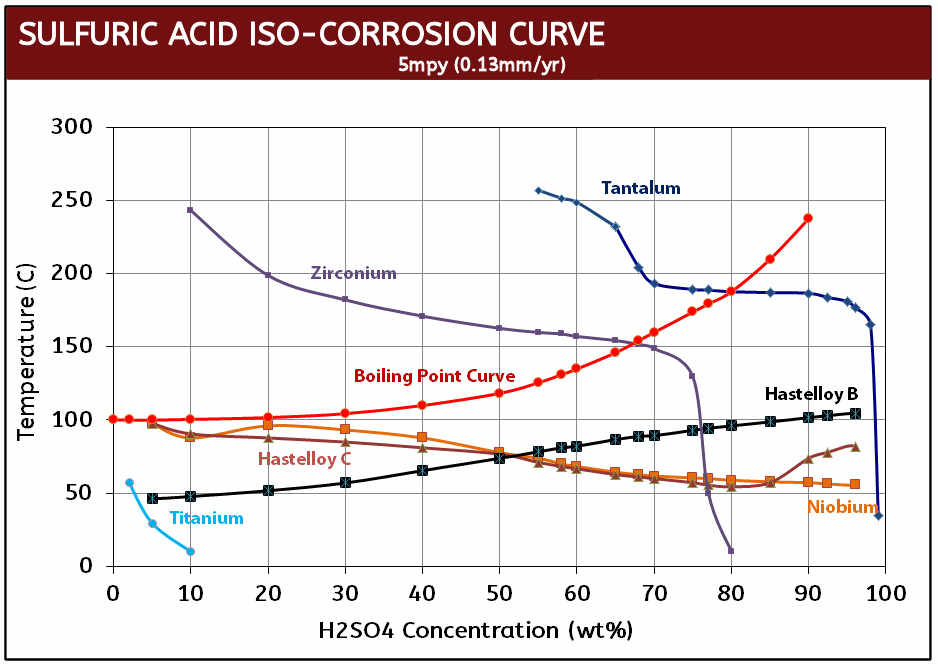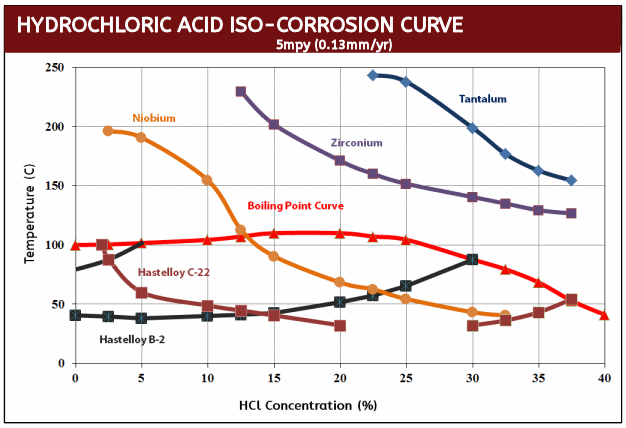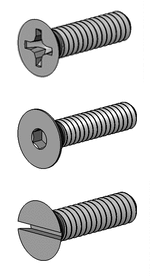Tantalum Hex Head Cap Screws
When nickel, titanium or zirconium alloys are not enough...
Tantalum hex head cap screws are best known for its unmatched corrosion resistance and chemical inertness. Tantalum screws have a similar corrosion resistance to that of glass, but all of the typical mechanical and electrical properties of a metal.
Tantalum screws are also extremely stable at high temperatures, since tantalum has a melting point around 3000°C. High temperature applications require vaccum or inert gas since tantalum may embrittle when used in oxygen rich environments above 250°C. Tantalum hex head cap screws are also one of the most bio-compatible metals available and is also radio-opaque due to its high density (16.68 g/cm3).
All tantalum hex head cap screws are available in commercially pure tantalum and tantalum 2.5% tungsten (Ta-2.5%W).
Contact us to see if your required tantalum screws are in stock and how our engineers may help you with your tantalum fastener application.
Resources: Tantalum Torque Spec
Screw Types: Button Head Cap Screws, Flat Head Screws, Hex Cap Screws, Pan Head Screws, Set Screws, Socket Head Cap Screws, Tamper Resistant Security Screws,
Tantalum Hex Head Cap Screw Features and Benefits
It is important to differentiate between a tantalum hex head cap screw and hex head bolt. Often people assume they are the same, but they are actually very different fasteners in terms of how they are manufactured, as well as from an application perspective. Regardless of your choice, tantalum hex heads offer strong, stable joints because of their large head service.
The Hex Comparison
| Hex Head Cap Screw | Hex Head Bolts |
- Precise applications where tight tolerances on the body dimensions are required.
- Features flat washer facing under the bolt head.
- Also called a finished hex bolt.
| - Appropriate for when mechanical properties are more important than dimensional tolerances.
- Hex bolts have a flat end and lack the washer face under the head.
|
Tantalum Hex Head Cap Screw Advantages
The most important feature of a tantalum hex head cap screws is that it has a larger bearing surface area which provide better clamping pressure than other type of fastener such as a socket head cap screw. Additionally, since debris build up is less of an issue with this style of fastener verses a socket head cap screw, they are ideal of dirty applications where particles could clog up a socket. Though tantalum socket heads are typically used for tight access applications, hex heads can be a better choice when there is only side clearance available for tightening.
Tantalum Grades, Specifications and Chemistry
Tantalum (Commercially Pure)
Commercially pure tantalum metal is 99.95% pure tantalum has some o the best corrosion resistant properties of any metal. While its corrosion resistance is exceptional, it is relatively soft and mechanically similar in strength to copper.
Tantalum Specifications: UNS R05200, ASTM B521, B708

Tantalum 2.5% Tungsten (Ta-2.5W)
This grade of tantalum alloyed with 2.5% tungsten provided better overall strength while maintaining its exception corrosion resistant properties. For tantalum fastener applications this is usually preferred.
Tantalum 2.5% Tungsten Specifications: UNS R05252, ASTM B521, B708

Physical Properties
- Density 16.6 g/cc
- Melting Point 3290 K, 2996°C, 5462°F
- Boiling Point 5731 K, 6100°C, 9856°F
- Coefficient of Thermal Expansion (20°C) 6.5 x 10(-6) / °C
- Electrical Resistivity (20°C) 13.5 microhms-cm
- Electrical Conductivity 13% IACS
- Specific Heat .036 cal/g/°C
- Thermal Conductivity .13 cal/cm(2)/cm°C/sec
Tantalum Tensile Data

Tantalum Iso-Corrosion Curves


Tantalum Corrosion Resistance Table
TANTALUM SHOWS A NIL CORROSION RATE TO THE FOLLOWING MEDIAFor all temperatures up to at least 302F (150C) unless otherwise indicated |
Acetic acid
Acetic anhydride
Acetone
Air,<300°C (570°F)
Alcohols
Aldehydes
Aluminum chloride
Aluminum nitrate
Aluminum sulfate
Amines
Ammonium bicarbonate
Ammonium carbonate
Ammonium chloride
Ammonium nitrate
Ammonium acid phosphate
Ammonium phosphate
Ammonium sulfate
Amyl acetate or chloride
Aniline hydrochloride
Aqua regia
Barium carbonate
Barium chloride
Barium hydroxide
Barium nitrate
Benzoic acid
Body fluids
Boric acid
Bromine, dry, <300°C (570°F)
Bromine, wet
Butyric acid
Calcium bicarbonate
Calcium bisulfates
Calcium bisulfites
Calcium carbonate
Calcium chloride
Calcium hydroxide
Calcium hypochlorite
Carbolic acid
Carbon dioxide
Chloric acid
Chlorinated brine | Chlorine, dry, <250°C (480°F)
Chlorine, wet, <350°C (662°F)
Chlorine oxides
Chloroacetic acid
Chromic acid
Chrome plating solutions
Citric acid
Cleaning solutions
Copper salts
Dichloroacetic acid
Dimethylformaldehyde
Ethylene dibromideEthyl sulfate
Fatty acids
Ferric chloride
Ferric sulfate
Ferrous sulfate
Food stuffs
Formaldehyde
Formic acid
Fruits
Glycerine
Graphite, <1000°C
Hydroiodic acid
Hydrobromic acid
Hydrocarbons
Hydrochloric acid
Hydrogen bromide, <400°C
Hydrogen chloride, <350°C
Hydrogen iodide
Hydrogen peroxide
Hydrogen sulfide
Hydroxyacetic acid
Hypochlorus acid
Iodine, <300°C (570°F)
Ketones
Lactic acid
Lead salts
Magnesium chloride
Magnesium hydroxide
Magnesium sulfate | Maleic acid
Manganous chloride
Methyl alcohol
Methylsulfuric acid
Milk
Mineral oils
Mixed acids (sulfuric-nitric)
Motor fuels
Nickel salts
Nitric acid
Nitric acid, fuming
Nitric oxides
Nitrogen, <300°C (570°F)
Nitrous acid
Nitrosyl chloride
Organic chlorides
Organic acids
Organic esters
Organic salts
Oxalic acid
Oxygen, <300°C (570°F)
Pechloric acid
Petroleum products
Phenol
Phosphoric acid, <4ppmF,<180°C
Phosphorus, <700°C (1290°F)
Phosphorus chlorides
Phosphorus oxychloride
Phthalic anhydride
Pickling acids, except HNO3-HF
Potassium bromide
Potassium chloride
Potassium dichromate
Potassium ferricyanide
Potassium iodine-iodine
Potassium nitrate
Potassium permanganate | Potassium sulfate
Potassium thiosulfate
Propionic acid
Refrigerants
Sea water
Silver nitrate
Sodium acetate
Sodium aluminate
Sodium bisulfate, solution
Sodium bromide
Sodium chlorate
Sodium chloride
Sodium citrate
Sodium cyanide
Sodium dichromate
Sodium hypochlorite
Sodium nitrate
Sodium nitrite
Sodium phosphate
Sodium silicate
Sodium sulfate
Sodium sulfide
Sodium sulfite
Sodium thiosulfate
Stearic acid
Succinic acid
Sugar
Sulfamic acid
Sulfur, <500°C (930°F)
Sulfur chlorides
Sulfur dioxide
Sulfuric acid, to 175°C (350°F)
Sulfurous acid
Sulfuryl chloride
Tannic acid
Tartaric acid
Thoinyl chloride
Tin salts
Zinc chloride
Zinc sulphate |
TANTALUM SHOWS LIMITED CORROSION RESISTANCE TO THE FOLLOWING MEDIA |
Air,>300°C (570°F)
Ammonia
Ammonium hydroxide
Fluoride salt
Hydrofluoric acid | Hydrogen, >300°C (570°F)Hydrogen fluoride
Oleum (fuming sulfuric acid)
Potassium carbonate
Potassium hydroxide, dilute | Potassium hydroxide, conc.
Potassium pyrosulfate, molten
Sodium bisulfate, molten
Sodium carbonate
Sodium hydroxide, dilute | Sodium hydroxide, conc.
Sodium pyrosulfate, molten
Sulfur trioxide
Sulfuric acid, >175°C (350°F) |









